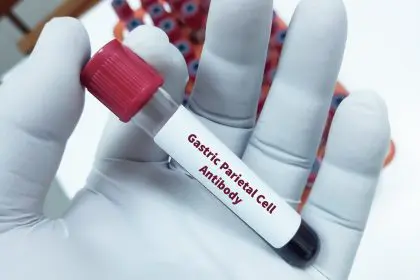Those mysterious white spots appearing on your tonsils can trigger immediate concern, and rightfully so. While they might seem like a minor inconvenience, these patches often signal your body’s battle against various infections and conditions that require attention. Understanding what these white formations mean could be the difference between quick recovery and prolonged illness.
The appearance of white spots on tonsils typically indicates the presence of tonsil exudate, a whitish fluid that accumulates when your tonsils work overtime to fight off invading bacteria or viruses. This natural defense mechanism often comes with accompanying symptoms like throat pain, swollen glands, fever, and general fatigue that can leave you feeling miserable for days or weeks.
1. Tonsillitis brings painful inflammation
Tonsillitis occurs when your tonsils become inflamed due to bacterial or viral infections, including common cold viruses. The condition transforms your normally pink tonsils into red, swollen masses that may develop white or yellow patches across their surface. The inflammation creates a perfect environment for bacteria to multiply, leading to those telltale white spots.
Beyond the visible white patches, tonsillitis typically produces intense throat pain that makes swallowing difficult, along with fever and general malaise. The condition affects both children and adults, though younger individuals tend to experience more severe symptoms. Left untreated, tonsillitis can lead to complications including abscess formation and the spread of infection to surrounding tissues.
2. Strep throat spreads rapidly through communities
Strep throat, caused by Streptococcus pyogenes bacteria, represents one of the most contagious causes of white spots on tonsils. This bacterial infection strikes suddenly, often beginning with mild throat discomfort that quickly escalates into severe pain accompanied by fever and distinctive white patches on swollen tonsils.
The highly contagious nature of strep throat makes it particularly problematic in schools, offices, and households. The bacteria spread through respiratory droplets when infected individuals cough, sneeze, or even talk. Without proper antibiotic treatment, strep throat remains contagious for weeks, potentially affecting entire communities. The infection can also lead to serious complications including rheumatic fever and kidney problems if left untreated.
3. Mononucleosis causes prolonged exhaustion
Mononucleosis, commonly known as mono or the kissing disease, stems from the Epstein-Barr virus and creates distinctive white spots on tonsils alongside debilitating fatigue. This viral infection spreads through saliva contact, making it common among teenagers and young adults who share drinks, utensils, or engage in close contact.
The white patches associated with mono often appear more extensive than those seen with bacterial infections, sometimes covering large portions of the tonsils. The accompanying symptoms include extreme fatigue that can last for months, swollen lymph nodes throughout the body, and sometimes a characteristic skin rash. Unlike bacterial infections, mono cannot be treated with antibiotics, requiring supportive care and extended rest periods.
4. Tonsil stones create persistent bad breath
Tonsil stones present a different type of white spot formation that results from debris accumulation rather than infection. These small, hard calcium deposits form when food particles, dead cells, and bacteria become trapped in the natural crevices of your tonsils, creating white or yellowish lumps.
While tonsil stones rarely cause serious health problems, they can produce persistent bad breath that affects social interactions and self-confidence. The stones may also create a sensation of something stuck in your throat, leading to frequent throat clearing or coughing. Some individuals can remove visible stones using cotton swabs or water irrigation, though persistent problems may require professional intervention.
Recognizing when medical attention becomes necessary
Several warning signs indicate the need for immediate medical evaluation when white spots appear on your tonsils. High fever, severe difficulty swallowing, breathing problems, or rapidly worsening symptoms all warrant urgent care. Additionally, white spots accompanied by a rash, joint pain, or extreme fatigue should prompt medical consultation.
Healthcare providers can perform rapid tests to distinguish between bacterial and viral infections, ensuring appropriate treatment. Bacterial infections like strep throat respond well to antibiotics, while viral conditions require supportive care and time for recovery.
The treatment approach depends entirely on the underlying cause. Bacterial infections typically improve within 24 to 48 hours of starting antibiotics, while viral infections may take one to two weeks to resolve completely. Tonsil stones often disappear on their own but may require removal if they cause persistent discomfort.
Preventing white spots on tonsils involves maintaining good hygiene practices, avoiding close contact with infected individuals, and supporting your immune system through adequate sleep, nutrition, and stress management. Regular hand washing remains one of the most effective prevention strategies.

















